Tteokbokki 떡볶이 (Korean Spicy Rice Cakes)
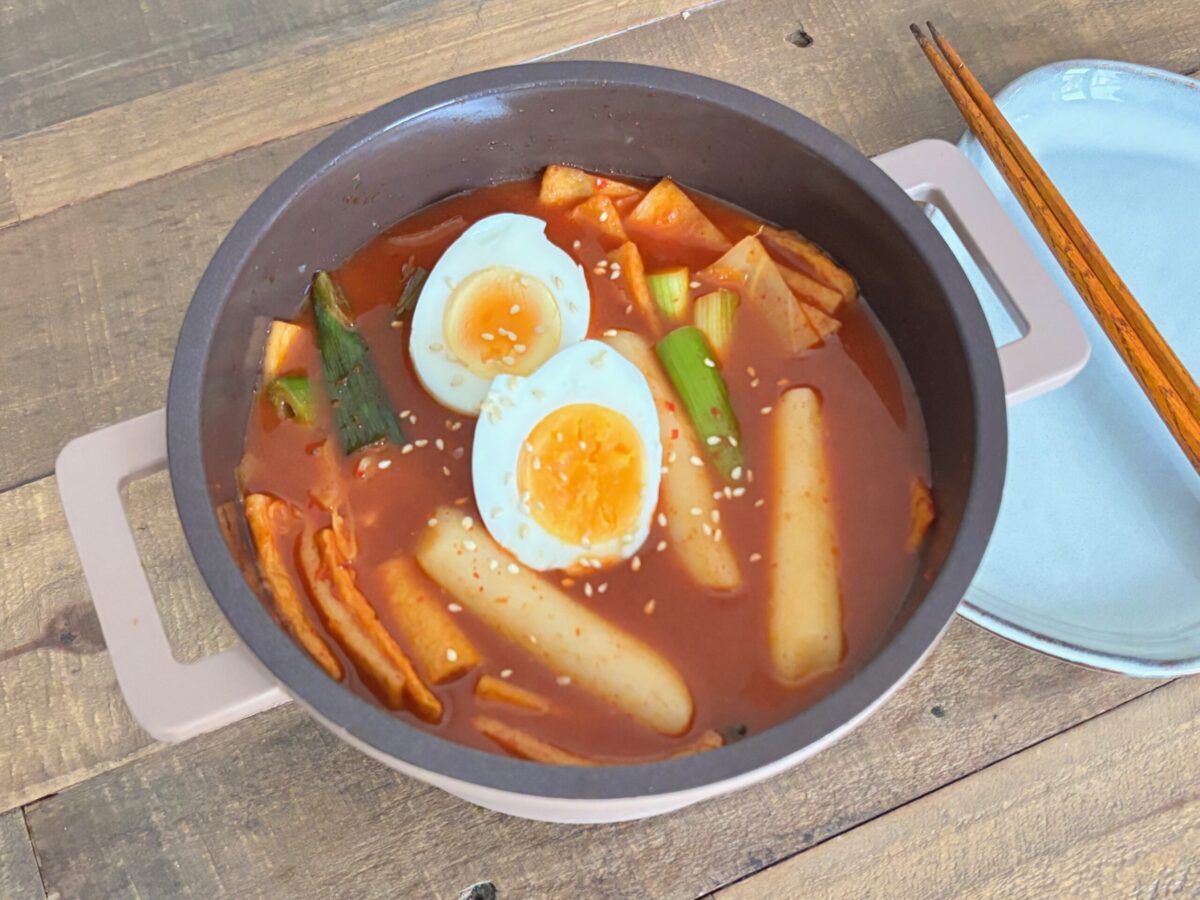
Korea’s Spicy Street Comfort
If you grew up in Korea, there’s a good chance your memories of tteokbokki are tied to laughter, rainy afternoons, and the warm scent of gochujang drifting through a busy alleyway. It’s not just a snack — it’s a feeling.
For many Koreans, tteokbokki was the after-school treat shared with friends, eaten standing shoulder to shoulder at a small street stall on a chilly day. The vendor’s large iron pan would bubble with bright red sauce, the steam carrying a mix of spice, sweetness, and something comforting you could never quite describe. Each bite of chewy rice cake coated in that deep red sauce felt like a warm hug, a small but powerful comfort in everyday life.
What’s beautiful about tteokbokki is how humble its ingredients are. Rice cakes, fish cakes, a few vegetables, and gochujang, nothing fancy, but together they create something unforgettable. Over the years, it has evolved from a simple street snack into a versatile dish that can be found everywhere: in trendy Seoul cafés, convenience stores, and even high-end fusion restaurants. Some people add cheese for creaminess, some toss in noodles for an extra filling meal, and others prefer it just the old-fashioned way .Spicy, sweet, and a little messy.
When I first made tteokbokki abroad, far from home, it brought back those familiar emotions. The smell of gochujang simmering in the pan instantly reminded me of Korean streets after the rain, neon signs glowing, steam rising, and friends laughing over a shared plate of red-tinted rice cakes. Even though I was cooking in a quiet kitchen in Ireland, it felt like home for a moment.
That’s what makes tteokbokki special, it’s more than food; it’s a connection to warmth, to people, and to memories. It reminds us that happiness often comes from the simplest things: a bowl of spicy rice cakes, a pair of chopsticks, and someone to share it with.

Tteokbokki (Korean Spicy Rice Cakes) – 2 Servings
Ingredients
Method
- If the rice cakes are firm, soak them in warm water for about 10 minutes to soften.
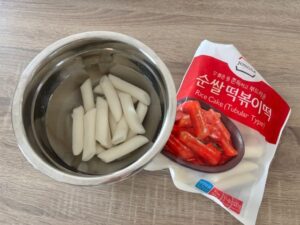
- In a small bowl, mix gochujang, gochugaru, sugar, soy sauce, dashida (or curry powder), and pepper.
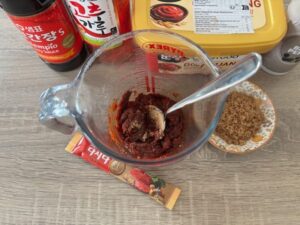
- Fish cakes:cut into 4 × 5 cm rectangles.

- Cabbage: cut into 3–4 cm bite-sized pieces.
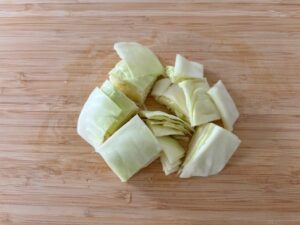
- Green onion: Cut into 5 cm long stick-like pieces.
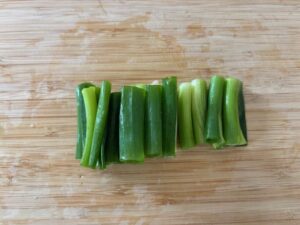
- In a medium pot, pour 600 ml of water and add the sauce.
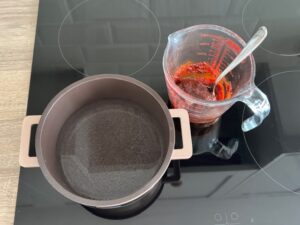
- Bring it to a boil over medium heat, stirring well to dissolve the gochujang completely.

- Once the broth starts boiling, add the rice cakes and cook for 3–4 minutes until they start to soften.
- Add the fish cakes and cabbage, and cook for another 5 minutes, stirring occasionally to prevent the rice cakes from sticking to the bottom.
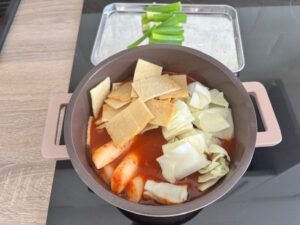
- When the sauce thickens slightly, add the green onion and boiled eggs.
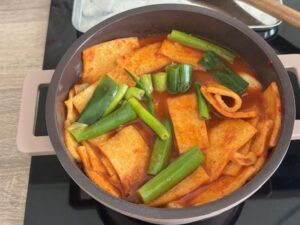
- Simmer for 1–2 more minutes, then taste and adjust seasoning with soy sauce or sugar if needed.
- Turn off the heat and let it sit for 1–2 minutes — this helps the sauce soak into the rice cakes.

- Optional: top with mozzarella cheese for a cheesy version
Notes
Extra Cooking Tips for Perfect Tteokbokki
-
Use anchovy broth instead of plain water.
Replace the 600 ml of water with anchovy–kelp broth for a deeper, more authentic Korean street food flavour. -
Control the sauce consistency.
- If you prefer soupy tteokbokki, add a bit more water (50–100 ml).
- For thicker, stickier sauce, simmer longer on low heat near the end.
-
Add a spicy kick
Mix in a little Korean chilli oil or a few slices of fresh chilli pepper if you like it extra hot 🔥. -
Balance the sweetness
Korean tteokbokki often leans sweet. Adjust sugar (or use corn syrup or honey) depending on your taste. -
Prevent rice cakes from sticking.
Stir frequently while cooking , especially in the first few minutes and make sure the sauce stays simmering, not boiling too hard. -
Customise your add-ins
- Add ramyeon noodles for rabokki 🍜
- Add cheese, fish balls, or dumplings for variety.
- Or toss in shredded mozzarella just before serving for a creamy twist.
-
Soak leftover rice cakes before reheating.
If you have leftovers, soak the rice cakes in hot water for 5 minutes, then reheat with a splash of water, they’ll turn soft again instead of hard or dry.
